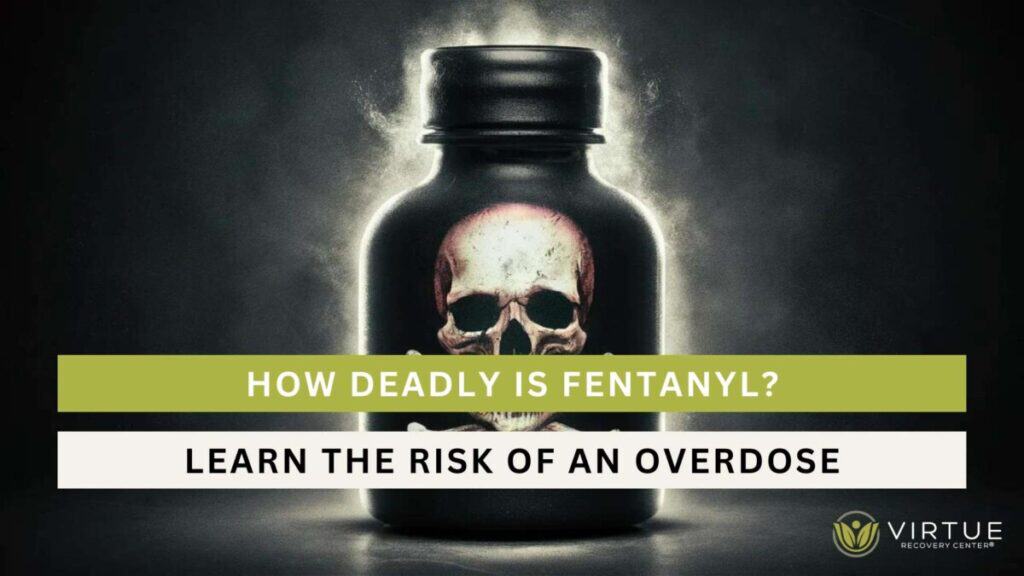Key Takeaways
- Fentanyl is a powerful synthetic opioid, significantly more potent than morphine.
- The drug has been involved in a growing number of opioid overdose deaths.
- Recognizing the signs of a fentanyl overdose can save lives.
- Naloxone is a critical tool in reversing overdoses, but immediate action is necessary.
- Public health initiatives and education are essential in combating the fentanyl crisis.
Introduction
Fentanyl has become a critical player in the ongoing opioid crisis, responsible for an alarming increase in overdose deaths. This synthetic opioid is incredibly potent, making it both an effective pain reliever and a deadly substance when misused. Understanding the risks associated with fentanyl is crucial for both prevention and effective response in emergency situations.
What is Fentanyl?
Fentanyl is a synthetic opioid that was originally developed for the treatment of severe pain, particularly in cancer patients. It is used medically in the form of patches, lozenges, and injections. In comparison to other opioids, such as morphine and heroin, fentanyl is significantly more potent. In fact, fentanyl is approximately 100 times more powerful than morphine and about 50 times stronger than heroin.
The Potency of Fentanyl
The extreme potency of fentanyl means that even a small amount can be lethal. A dose as small as 2 milligrams of fentanyl can be fatal, depending on an individual’s body size, tolerance, and other factors. The lethal dose highlights the dangers of this substance, particularly when it is mixed with other drugs or sold as counterfeit pills made to look like prescription medications.
Fentanyl Overdoses: Statistics and Impact
According to the Health and Human Services and the Drug Enforcement Agency (DEA), fentanyl has been linked to a significant number of opioid overdose deaths in recent years. The Centers for Disease Control and Prevention (CDC) reports that in the past year alone, fentanyl and other synthetic opioids were involved in more than 60% of all opioid-related deaths. This growing trend underscores the urgent need for awareness and preventive measures.
Facts About Fentanyl
Fentanyl is a synthetic opioid that is 50-100 times more potent than morphine, often prescribed for severe pain management. Its high potency increases the risk of overdose, particularly when mixed with other substances like heroin or cocaine. Illegally manufactured fentanyl has contributed to a significant rise in drug overdose deaths. Understanding the dangers of fentanyl is crucial for public health and safety.
How Fentanyl is Distributed and Misused
While fentanyl is legally prescribed for severe pain, it is also widely distributed illegally. Drug dealers often mix fentanyl with other substances like heroin, cocaine, and methamphetamine to increase potency and profits. These mixtures are particularly dangerous because users may be unaware they are consuming fentanyl, increasing the risk of overdose. Additionally, fentanyl is frequently found in counterfeit pills made to look like legitimate prescription drugs, further exacerbating the problem.
Recognizing a Fentanyl Overdose
Recognizing the signs of a fentanyl overdose can be life-saving. Symptoms often include severe drowsiness, confusion, trouble breathing, and pinpoint pupils. Unlike other opioids, the potency of fentanyl can cause an overdose much more quickly, making immediate recognition and response critical. If you suspect someone is overdosing on fentanyl, it is crucial to act fast.
Responding to a Fentanyl Overdose
If someone you know is experiencing a fentanyl overdose, the first step is to call 911 immediately. Emergency responders can provide the necessary medical support to save a life. Administering naloxone, a medication that can rapidly reverse an opioid overdose, can also be a crucial step. Naloxone is available in both injectable and nasal spray forms and can be administered by anyone, including friends, family members, or bystanders. Quick administration of naloxone can restore normal breathing and consciousness until professional help arrives.
Prevention and Education for Fentanyl Poisoning
Preventing fentanyl overdoses requires a multifaceted approach, including law enforcement, public health initiatives, and education. The Drug Enforcement Agency (DEA) and other agencies are actively working to combat the distribution of fentanyl through increased surveillance, laboratory testing, and enforcement actions. Public health campaigns aim to educate the public about the dangers of fentanyl, the importance of naloxone, and how to recognize the signs of an overdose. Community-based programs and treatment centers also play a critical role in providing support and resources for individuals struggling with substance use disorders.
Conclusion
Fentanyl is a powerful and dangerous synthetic opioid that poses significant risks, particularly when misused. The high potency and prevalence of fentanyl in the drug market have contributed to a rise in opioid overdose deaths. Understanding the dangers, recognizing the signs of an overdose, and knowing how to respond effectively are essential steps in addressing this crisis. If you or someone you know is struggling with opioid addiction, call Virtue Recovery Killeen at 855-788-5582. Help is available, and taking action can save lives.
FAQs
What makes fentanyl so dangerous?
Fentanyl is extremely potent, up to 100 times more powerful than morphine. Even a tiny amount can cause a fatal overdose, especially when mixed with other drugs or sold as counterfeit pills.
How can I tell if a pill contains fentanyl?
It is often difficult to tell if a pill contains fentanyl without laboratory testing. Many counterfeit pills are made to look like legitimate prescription drugs, making them particularly dangerous.
What should I do if I suspect someone is overdosing on fentanyl?
If you suspect someone is overdosing on fentanyl, call 911 immediately. Administer naloxone if available, and try to keep the person awake and breathing until emergency responders arrive.
How does naloxone work in reversing an opioid overdose?
Naloxone works by quickly binding to opioid receptors in the brain, displacing the opioid and reversing the effects of the overdose. This can restore normal breathing and consciousness in a person experiencing an opioid overdose.
What is fentanyl used for?
Fentanyl is used for managing severe pain, often in patients with chronic pain or pain following surgery. It is similar to morphine but significantly more potent, making it effective for patients who do not respond well to other opioids.
Can fentanyl be absorbed through the skin?
Yes, fentanyl can be absorbed through the skin, which is why it is available in patch form for chronic pain management. This transdermal application can be dangerous if the patches are handled improperly.
Who invented fentanyl?
Fentanyl was invented by Dr. Paul Janssen in 1960. It was originally developed for use as an anesthetic during surgery.
What was the original form of fentanyl?
The original form of fentanyl was a fast-acting intravenous anesthetic. Since then, it has been developed into various forms, including patches, lozenges, and prescription pills.
Can fentanyl use lead to addiction?
Yes, fentanyl use can lead to addiction due to its high potency and addictive properties. Even when used as prescribed, patients can develop a dependence on this powerful opioid.
How does fentanyl affect the body?
Fentanyl affects the body by binding to opioid receptors, reducing pain but also causing significant respiratory depression, which can be deadly. The risk of overdose is particularly high with fentanyl due to its potency.
How does fentanyl affect the brain?
Fentanyl affects the brain by altering the perception of pain and triggering intense feelings of euphoria. This high can quickly lead to addiction, as the brain craves the pleasurable effects.
How is fentanyl addiction treated?
Fentanyl addiction is treated with a combination of medication-assisted treatment, counseling, and support services. Medications like methadone or buprenorphine can help manage withdrawal symptoms and reduce cravings.
What does fentanyl look like?
Fentanyl can be found in various forms, including prescription pills, patches, and lozenges. Illegally, it is often pressed into pills that resemble other prescription opioids, making it hard to identify without proper testing.
What is “rainbow fentanyl”?
“Rainbow fentanyl” refers to brightly colored fentanyl pills that resemble candy. This form is particularly dangerous as it can attract children and teenagers, leading to accidental overdoses.
Where can I find resources and support for addiction recovery?
Virtue Recovery Killeen offers comprehensive support, including counseling, therapy, and medical assistance for those struggling with substance use disorders. Call 855-788-5582 to start your journey to recovery.
Resources
https://www.dea.gov/factsheets/fentanyl
https://nida.nih.gov/publications/drugfacts/fentanyl
https://adf.org.au/drug-facts/fentanyl/
http://ph.lacounty.gov/sapc/managepainsafely/docs/Fentanyl%20FINAL.pdf
- About the Author
- Latest Posts
Gigi Price holds licenses as a Master Social Worker and Clinical Drug Counselor. She completed her master’s degree in Social Work at Texas State University. Over the last decade, Gigi has been dedicated to utilizing evidence-based practices to enhance patient care and treatment planning, resulting in positive, long-term outcomes for patients and their families. Her passion lies in creating a treatment environment where professionals collaborate to bring about positive change and provide a safe, trustworthy therapeutic experience. Patients can be confident in receiving top-quality care under her leadership.
In her role as the Clinical Director of Virtue Recovery Houston, Gigi conducted research to identify the most effective approaches for treating patients with acute mental health diagnoses, PTSD, and Substance Use Disorder. She then assembled a team of skilled clinicians who could offer various therapeutic modalities, such as Cognitive Behavioral Therapy (CBT), Dialectical Behavioral Therapy
(DBT), Acceptance and Commitment Therapy (ACT), Somatic Exposure, Eye Movement Desensitization and Reprocessing (EMDR), and Cognitive Processing Therapy (CPT). Gigi takes pride in overseeing the development and implementation of Virtue Houston’s Treatment Program, which includes two specialized therapeutic curricula tailored to the unique needs of individuals struggling with mental health issues, addiction, and PTSD.









